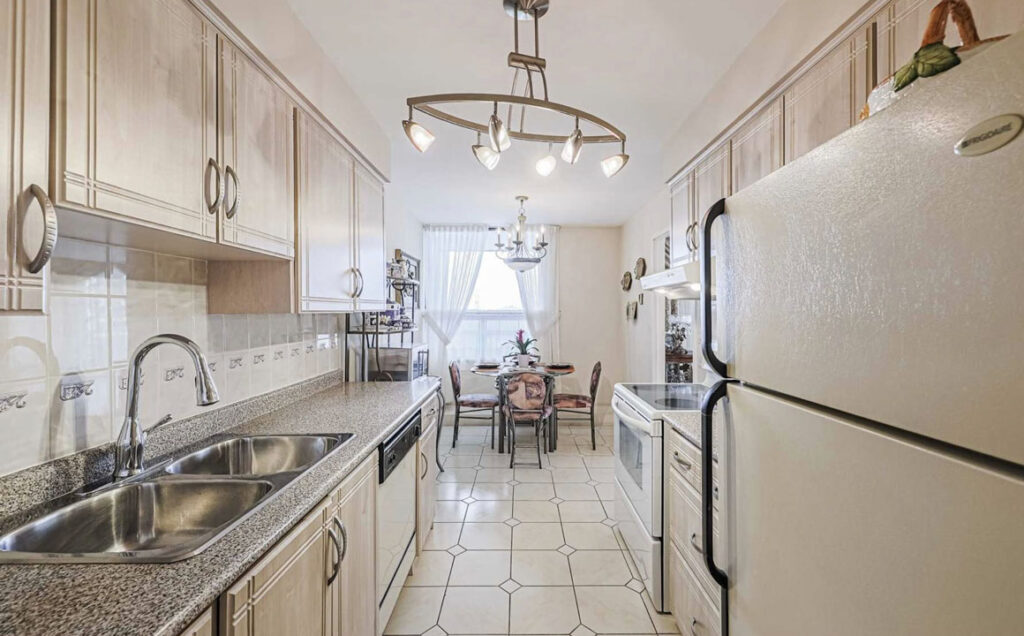Have you ever felt like your kitchen just doesn’t work as well as it could? Maybe you find yourself walking back and forth between the stove, sink, and refrigerator more times than you’d like, or perhaps there never seems to be enough counter space for all your cooking gadgets. You may need a functional kitchen layout.
Well, you’re not alone! Many people struggle with kitchen layouts that don’t quite fit their needs. But the good news is, with a little bit of planning and know-how, you can design a kitchen layout that’s not only functional but also makes cooking and meal prep a breeze.
So, what exactly goes into designing a functional kitchen layout? Well, it’s all about finding the right balance between form and function. You want a kitchen that looks great, of course, but more importantly, you want one that works well for you and your family.
That means thinking about things like how you move around the space, where your appliances are located, and how much storage you have. It’s kind of like putting together a puzzle – you want all the pieces to fit together perfectly to create a space that’s both practical and inviting.
Things You Need to Consider for a Functional Kitchen Layout

1. Assess Your Space
Before diving into any design decisions, take a good look at your kitchen space. Consider its size, shape, and existing layout. Take note of any architectural features like windows, doors, or structural elements that may impact your design choices. Understanding your space constraints will help you make informed decisions when planning your kitchen layout.
Consider Workflow
One of the most critical factors in designing a functional kitchen layout is considering the workflow – how you move around and use the space while cooking. The concept of the kitchen work triangle, connecting the stove, sink, and refrigerator, is a fundamental principle to guide your layout. Ideally, these three areas should be arranged in a way that minimizes the distance between them, making it easy to navigate between tasks efficiently. Think about how you typically move around your kitchen and arrange your workspace to support that flow.
2. Optimize Layout for Efficiency
Efficiency is key when it comes to a functional kitchen layout. Aim to create designated zones for different tasks, such as cooking, prepping, and cleaning, to streamline your workflow. Consider the “golden triangle” rule, where the sum of the distances between the three key work areas should ideally be between 13 and 26 feet for optimal efficiency. Additionally, incorporate ample counter space near your primary work areas for food preparation and appliance placement. Maximize storage by utilizing cabinets, drawers, and shelving strategically to keep your kitchen organized and clutter-free.
Balance Form and Function
While functionality is paramount, don’t overlook the importance of aesthetics in your kitchen design. Strive to strike a balance between form and function by choosing materials, colours, and finishes that complement your personal style while still meeting your practical needs. Consider factors like lighting, ventilation, the right finish for the Kitchen and ergonomic design elements to create a comfortable and inviting space that enhances your cooking experience.
Plan for Adequate Storage
Storage is a crucial aspect of any kitchen layout. Assess your storage needs based on your cooking habits, family size, and available space. Incorporate a mix of cabinets, drawers, and pantry storage to accommodate different items, from small appliances to bulky cookware. Utilize vertical space with tall cabinets or shelving units and consider incorporating specialized storage solutions like pull-out racks, lazy susans, or custom organizers to maximize every inch of space.
Adapt to Your Lifestyle
Finally, remember that your kitchen layout should be tailored to your unique lifestyle and preferences. Consider factors like family size, entertainment habits, and cooking frequency when making design decisions. If you love hosting dinner parties, prioritize open layouts and ample seating areas. For busy families, focus on durable materials and easy-to-clean surfaces that can withstand heavy use. Ultimately, your kitchen should reflect your individual needs and enhance your daily routine.
By carefully considering these factors and principles, you can design a functional kitchen layout that not only meets your practical needs but also enhances the overall enjoyment and efficiency of your cooking space.

